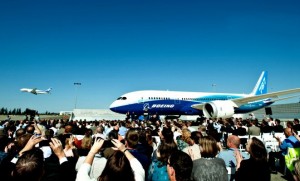
After a wave of extensive reporting on a string of incidents involving the 787, Boeing CEO Jim McNerney has defended the aircraft’s reliability while supporting investigations that he hopes will clear the aircraft of systemic or design flaws and restore the 787’s faltering reputation.
In a statement issued after reports of more (unconnected) incidents involving the 787, McNerney said: “While the 787’s reliability is on par with the best in class, we have experienced in-service issues in recent months and we are never satisfied while there is room for improvement. For that reason, today we jointly announced with the Federal Aviation Administration (FAA) the start of a review of the 787’s recent issues and critical systems.
“We welcome the opportunity to conduct this joint review. Our standard practice calls on us to apply rigorous and ongoing validation of our tools, processes and systems so that we can always be ensured that our products bring the highest levels of safety and reliability to our customers,” McNerney added.
“Boeing shares the same commitment to air travel safety that Transportation Secretary LaHood and FAA administrator Huerta spoke of this morning in Washington, D.C. We also stand 100 per cent behind the integrity of the 787 and the rigorous process that led to its successful certification and entry into service. We look forward to participating in the joint review with the FAA, and we believe it will underscore our confidence, and the confidence of our customers and the traveling public, in the reliability, safety and performance of the innovative, new 787 Dreamliner.”
Boeing said the 787 has so far recorded 50,000 flying hours and routinely operates more than 150 flights daily. Some observers believe the coverage of 787 incidents is becoming disproportionate to the severity of the events and is clouding the otherwise successful entry into service of an aircraft that underwent nearly 200,000 hours of testing and certification flights.
Notwithstanding the potential for hype, however, the NTSB and FAA investigations are certain to focus heavily on the lithium ion batteries used aboard the 787. In 2007 the FAA applied special conditions to the use of such batteries noting they are: “significantly more susceptible to internal failures that can result in self-sustaining increases in temperature and pressure (thermal runaway) than their nickel-cadmium or lead-acid counterparts.” The FAA said “self-sustaining fire or explosion” were risks from over-charging.
Last week’s JAL incident in Boston is believed to have been caused by a lithium ion battery fire.
United Airlines, which has suffered electrical failures onboard two of its 787s has welcomed the investigation. United, like other airlines, will continue to fly the aircraft, a position supported by National Transportation Safety Bureau (NTSB) and the FAA, which have so far said there is no reason to ground the aircraft.











